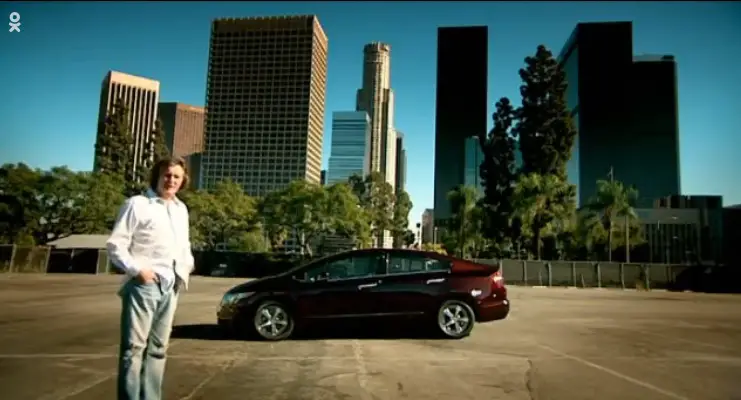Honda discontinued the Honda Clarity Fuel Cell, Plug-in Hybrid and Electric for these obvious reasons
Honda announced earlier today (June 16, 2021) they are killing the Clarity Fuel Cell and plug-in hybrid in Japan. With the Clarity Electric discontinued last year, Honda is closing the book on the 13-year long Clarity experiment.
Embed from Getty ImagesWhile Honda has not officially announced the Clarity’s end in California, since the Clarity and the actual fuel cell is made in Japan, it will only be a matter of time before Honda makes it official, deleting it from its lineup.
Here’s why Honda discontinued the Clarity.
Official reasons
In the linked article from Nikkei.com above, Honda has its official reasons. Thanks to a lack of hydrogen refueling stations, a high price without government subsidies, and an overall low demand for Fuel Cell cars, customers weren’t leasing or buying the Honda Clarity in large enough numbers to justify its continued development, support, and production.
Back in 2019, Takahiro Hachigo, laid out broad plans for Honda to have 2/3s of its lineup to be electrified by 2030 and to reduce total variations at the trim and option level by a third. Earlier this year, Honda announced they’d have a full electric and fuel cell vehicle lineup by 2040. Honda literally wants to overall be leaner and greener. The Clarity, in either Fuel Cell, Plug-in Hybrid, or electric form, no longer fits into that overall plan.
Ground-breaking technology hampered by a weak infrastructure making for a sub-par lease experience
Before the Clarity morphed into a plug-in Hybrid and electric variant, it was, first and foremost, a fuel cell vehicle. In a perfect world, a Hydrogen car with reasonably priced H2 makes perfect sense. With Hydrogen sourced from renewable sources, the Fuel Cell car was the green answer to all the benefits of an electric car with the ease of a gas car. As James May put in his Top Gear review of the Clarity FCX in 2008, “The reason the Clarity is the car of the future is because it’s just like the car of today.”

But, the Fuel Cell vehicle lease experiment was far from perfect. As of this writing there are only 48 H2 stations in all of California with 19 of them actually up and operating. Click on my “hydrogen” tag at the bottom of this post and you’ll see story after story of Fuel Cell vehicle owners suffering a localized H2 shortage. Since Hydrogen has only a handful of manufacturers and suppliers, one small disruption in the supply chain meant no H2 being supplied to stations. What good is a fuel cell vehicle if you can’t fill up?
On top of that, as hinted at by only half the stations running at any one time, H2 pumps are, at the moment, notoriously unreliable, Fuel Cell Vehicle lessees reporting only getting half fill-ups and- equipment failure at the pump, on top of waiting hours in line.
While a tiny fraction of H2 is classified as green, from renewable energies, most of H2 is actually still made from natural gas in a process called Steam Methane Reformation. Fuel Cell vehicles, right now, are not green.
And, while it costs around $80 to fill up a Clarity’s 5KG tank, Honda was subsidizing fuel costs to the tune of $15,000 of H2 with complimentary fuel cards to Honda Clarity lessees over three years. Even with “free” H2, demand in California was low.
Fuel cell technology not dead
Honda will honor its 2017 joint venture with GM to develop Fuel Cell technology, despite killing the Clarity, and “will consider rolling out new models” So, the Fuel Cell vehicle isn’t entirely dead for Honda.
California is still pouring money into its hydrogen station infrastructure and hydrogen suppliers are working towards a more robust chain despite the Clarity’s demise. There are still Toyota Mirais, Hyundai Nexos and whatever comes next to cater too. In the near future, with hundreds of stations and H2 pump teething issues sorted, the Honda Clarity’s technology, under a different model name, might come back.
But for now, the Clarity is dead.





No obvious reason is given for discontinuing the plug-in Clarity. It’s one of the better plug-in hybrids. The Prius is shorter on range and the volt is shorter on space. A full size sedan that can net 80-100mpg equivalent on short commutes is awesome.
Where can you legally drive those speeds?
That’s miles per gallon, not miles per hour.
It’s hard for any fuel cell car to compete with an all electric or plug in hybrid. Being able to drive right back to your home and recharge overnight is great.
Who took the desire in Honda is a real stupid. The best car with very low marketing keeps the model for a few places like the rest of the world does not have electricity except California. Excellent car the best in their class.